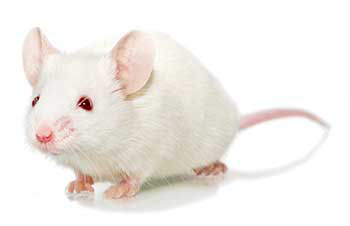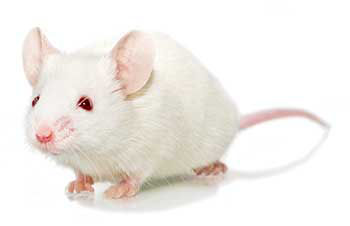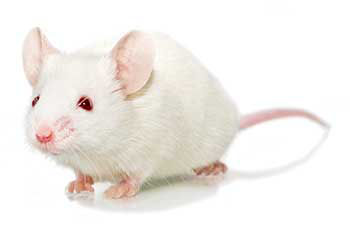Application Areas:
huPBMC-B2m-NOG

| Model No. | Nomenclature | Genotype |
|---|---|---|
| huPBMC-14957-F | NOD.Cg-B2mem1Tac Prkdcscid Il2rgtm1Sug/JicTac | ko/ko;sp/sp;ko/ko |
| huPBMC-14957-M | NOD.Cg-B2mem1Tac Prkdcscid Il2rgtm1Sug/JicTac | ko/ko;sp/sp;ko/y |
- Description
- Price & Licensing
- Health Report
- Overview
- Genetics
- Guides & Publications
- Applications & Therapeutic Areas
- Transit, Housing & Welfare
- Diet
Overview
Nomenclature: NOD.Cg-B2mem1Tac Prkdcscid Il2rgtm1Sug/JicTac
- B2m-NOG mice are engrafted with human peripheral blood mononuclear cells (PBMCs) upon order and shipped within one week of injection.
- The B2m-NOG is an immunodeficient CIEA NOG mouse® with an additional knockout of the B2m gene which disrupts MHC class I antigen presentation.
- B2m-NOG mice can successfully engraft human PBMCs and tumors.
- Compared to NOG, B2m-NOG mice have markedly delayed GvHD onset after human PBMC engraftment, providing an expanded study window (8+ weeks). This vastly increases the utility of the model in immuno-oncology experiments.
- B2m-NOG has reduced efficiency of human PBMC engraftment relative to NOG as well as a CD4+ bias that increases over time in engrafted peripheral blood T cells (see data in phenotype section).
- By default, Taconic does not typically utilize myeloablation prior to PBMC engraftment as it can shorten the study window. If desired, inquire about options such as irradiation, PBMCs of specific donor HLA types or patient-derived PBMCs.
- Humanized immune system mice require special housing and husbandry. We recommend reviewing the the comprehensive document Taconic's Humanized Immune System Models: Licensing, Care & Resources and the Video: Care of HIS mice for experimental success prior to ordering.
Availability
huPBMC-NOG mice are produced upon order and delivered within one week of injections.Genetics
Guides & Publications
Initial Publication:
Verma, B.; Ruggeri, B.; Dubé, P.; Volden, P.; Wesa, A. Unique Immunodeficient Murine Host Strains Impact Expansion and Engraftment of T cells in PBMC Humanized Mice. New York Academy of Sciences’ Frontiers in Cancer Immunotherapy. May 14-15, 2019; New York, NY.
Applications & Therapeutic Areas
- Cell and Tissue Humanized
- Oncology & Immuno-Oncology
Transit, Housing & Welfare
Need more info? Click the live chat button or Contact Us
Taconic packs humanized immune system mice as cagemates - one engraftment lot per Taconic Transit Cage (TTC). Taconic does not combine different lots into a single TTC.
Diet
- Licensing
- Pricing - USD
- Pricing - EUR
- Pricing - USD Nonprofit
- Pricing - EUR Nonprofit
- Select my Health Standard
- Get Custom Pricing Guide
huPBMC-B2m-NOG
Nonprofit users (excluding users at nonprofit foundations which are affiliated with a for-profit entity): For internal research purposes, the CIEA NOG mouse® Conditions of Use for nonprofit users apply. If you wish to perform sponsored research or fee-for-service contract research using the CIEA NOG mouse®, please inquire for access conditions.
For-profit users and users at foundations which are affiliated with for-profit entities: The CIEA NOG mouse® Conditions of Use for for-profit users apply.
The CIEA NOG mouse® is produced and distributed under license rights to the following patents and trademarks:
- Japanese Patent No. 3,753,321
- US Patent No. 7,145,055; 5,464,764; 5,487,992; 5,627,059; 5,631,153; 5,789,215; 6,204,061; 6,653,113; 6,689,610
EP Patent No. 1,338,198 - Japanese Trademark Reg. No. 4,823,423
- US Trademark Reg. No. 3,118,040
- EU Trademark Reg. No. 3,736,758
Pricing - USD
Opportunist Free (OF) Health Standard
huPBMC-14957 Female
huPBMC-14957-F Genotype ko/ko;sp/sp;ko/ko
Cohorts are reserved upon order placement and will take 2-4 weeks to fulfill. An estimated lead time will be provided to you within 2-3 business days.
| Age in Weeks Post Engraftment | Quantity 1 - 999 |
|---|---|
| 3 to 13 | US$743.00 |
huPBMC-14957 Male
huPBMC-14957-M Genotype ko/ko;sp/sp;ko/y
Cohorts are reserved upon order placement and will take 2-4 weeks to fulfill. An estimated lead time will be provided to you within 2-3 business days.
| Age in Weeks Post Engraftment | Quantity 1 - 999 |
|---|---|
| 3 to 13 | US$743.00 |
Pricing - EUR
Opportunist Free (OF) Health Standard
huPBMC-14957 Female
huPBMC-14957-F Genotype ko/ko;sp/sp;ko/ko
Cohorts are reserved upon order placement and will take 2-4 weeks to fulfill. An estimated lead time will be provided to you within 2-3 business days.
| Age in Weeks Post Engraftment | Quantity 1 - 999 |
|---|---|
| 3 to 13 | 676,00 € |
huPBMC-14957 Male
huPBMC-14957-M Genotype ko/ko;sp/sp;ko/y
Cohorts are reserved upon order placement and will take 2-4 weeks to fulfill. An estimated lead time will be provided to you within 2-3 business days.
| Age in Weeks Post Engraftment | Quantity 1 - 999 |
|---|---|
| 3 to 13 | 676,00 € |
Pricing - USD Nonprofit
Opportunist Free (OF) Health Standard
huPBMC-14957 Female
huPBMC-14957-F Genotype ko/ko;sp/sp;ko/ko
Cohorts are reserved upon order placement and will take 2-4 weeks to fulfill. An estimated lead time will be provided to you within 2-3 business days.
| Age in Weeks Post Engraftment | Quantity 1 - 999 |
|---|---|
| 3 to 13 | US$743.00 |
huPBMC-14957 Male
huPBMC-14957-M Genotype ko/ko;sp/sp;ko/y
Cohorts are reserved upon order placement and will take 2-4 weeks to fulfill. An estimated lead time will be provided to you within 2-3 business days.
| Age in Weeks Post Engraftment | Quantity 1 - 999 |
|---|---|
| 3 to 13 | US$743.00 |
Pricing - EUR Nonprofit
Opportunist Free (OF) Health Standard
huPBMC-14957 Female
huPBMC-14957-F Genotype ko/ko;sp/sp;ko/ko
Cohorts are reserved upon order placement and will take 2-4 weeks to fulfill. An estimated lead time will be provided to you within 2-3 business days.
| Age in Weeks Post Engraftment | Quantity 1 - 999 |
|---|---|
| 3 to 13 | 676,00 € |
huPBMC-14957 Male
huPBMC-14957-M Genotype ko/ko;sp/sp;ko/y
Cohorts are reserved upon order placement and will take 2-4 weeks to fulfill. An estimated lead time will be provided to you within 2-3 business days.
| Age in Weeks Post Engraftment | Quantity 1 - 999 |
|---|---|
| 3 to 13 | 676,00 € |
Select my Health Standard
Need help choosing the right Taconic Biosciences health standard for your research?
Use the Health Standard Selector to enter your exclusion list. The tool will tell you which health standards meet your requirements.
Get custom pricing guide
Schedule A Scientific Consultation
Connect directly with a member of our Scientific Solutions team who can help you select the most appropriate model and maximize your experimental success.
















.jpg)

.jpg)
.jpg)
.jpg)
.jpg)





.jpg)


.jpg)
.jpg)




.jpg)




.jpg)

.jpg)









